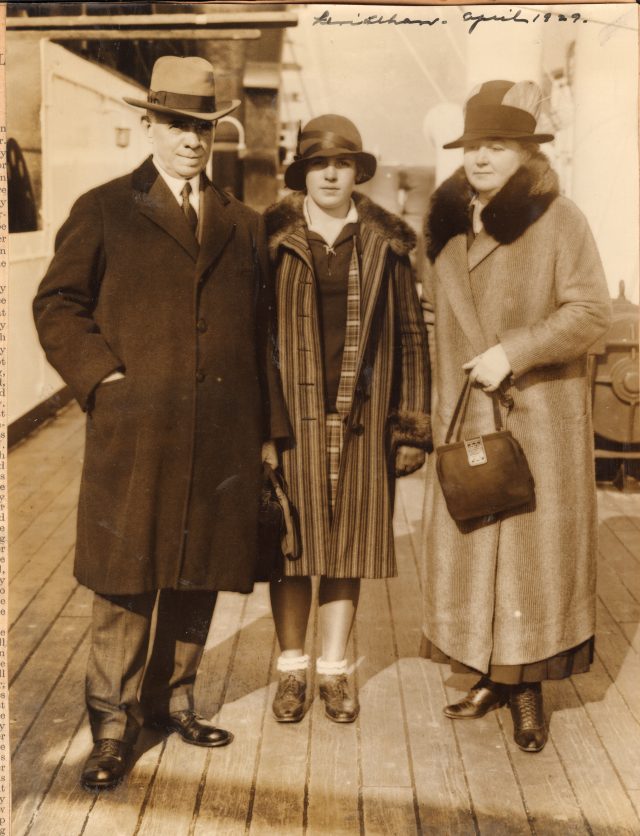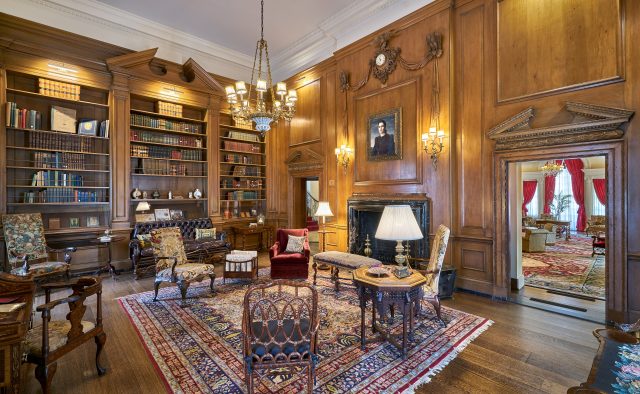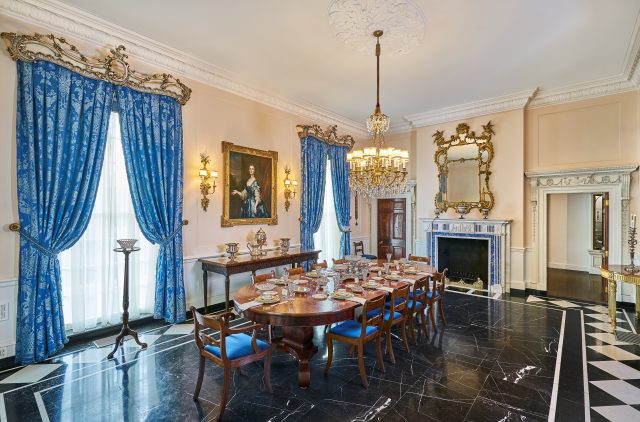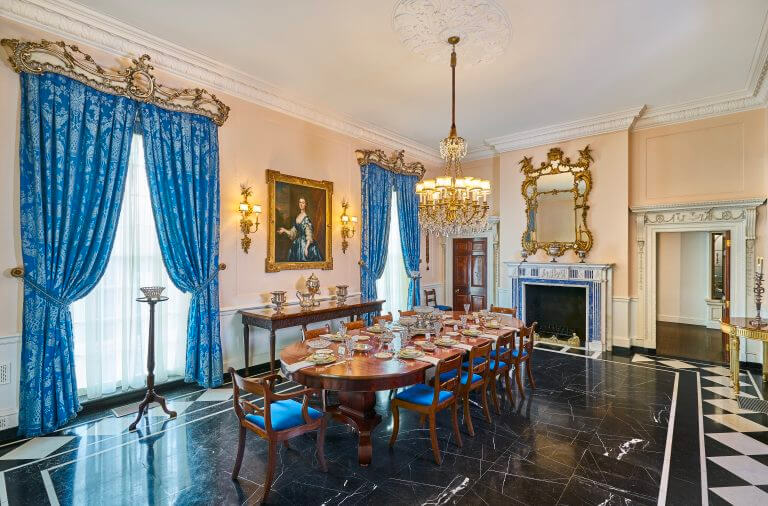Poet T. S. Eliot called April “the cruelest month” but his 1922 decree was beside the point to Nashville’s Cheek family seven years later, when Leslie, his wife, Mabel, and their children, Leslie, Jr., and daughter Huldah visited English country estates with their architect, Bryant Fleming. The resplendent art and antiquities of great manor houses met them at every turn in the spring of 1929, but Mr. and Mrs. Cheek toured with purpose, mindful of the calendar. The stone walls of their new country estate just outside Nashville, Tennessee, were soon to rise, and the public rooms and family bedroom suites were to be furnished with British and American Antiques of the 18th and early 19th centuries. Time was of the essence. The Cheeks were on a spree.
London beckoned for purchases and inspired by their tours of the English country estates, the Cheeks hastened to the galleries where available furnishings were shown to them. Several of the Art galleries that they worked with continue to this day, including Robersons of Knightsbridge, The Grafton Galleries, and H. L. Vetch, Ltd. The Cheekwood estate would eventually include antiques from dealers in New Orleans, Atlanta, and New York.
Photo: Mr. Leslie Cheek Sr., Mrs. Mabel Cheek, and their daughter Huldah on the SS Leviathan in 1929. From the Cheekwood Estate & Gardens Archives.

If connoisseurship might be in doubt, heritage was reliable, and the Cheeks’ choices harkened to periods and styles of the 18th century, in chronological order— William and Mary, Queen Anne, Chippendale, from the lathe to the quarry, the foundry to the loom, their favored styles were from centuries earlier —the Chippendale “walnut armchairs with “carved ball and claw feet”; the Queen Anne side chair with “ cabriole legs”; the Chippendale in “gilt wood” with “fluted legs” and a “green marble top.” For the library, a William and Mary sofa, 84” long with “loose seat cushions,” its “tapestry fabric” a “woodland landscape pattern.” Accessories were useful as well as ornamental, so the library must have inkwells, a silver embossed desk set, and Chinese bronze bookends, in addition to draperies to hang on brass rods and a Tabriz oriental rug measuring 11’ by 13,’ give or take a few inches.
Photo: Cheek Mansion, Library, 2018. Cheekwood Estate & Gardens.

Antique furnishings saw the Cheekwood dining room become harmonious as Mr. and Mrs. Cheek chose a mahogany a late Classical Boston table with a pedestal on a “scroll base,” while the Klismos chairs, also mahogany, were covered in a “dark blue silk.” The couple could not resist a Chippendale mirror of “gilt wood, ornately carved in scroll panels of foliage and flowers…with a floral basket and a falcon at each side.”
The Cheekwood country estate would have up-to-date modern comforts, it goes without saying, from the kitchen and bathroom appliances. The overarching idea for furnishings, however, blended and culture, which one historian defines as “shorthand for the cultivated world view of educated, genteel, and cosmopolitan people.”
Years later, Huldah Cheek (Mrs. Walter Sharp), was asked by an interviewer, “How many actual ‘buying trips’ did your parents go on to furnish Cheekwood?”
The three-word reply, without hesitation: “One big one.”
Photo: Cheek Mansion, Dining Room, 2018. Cheekwood Estate & Gardens.

Blog post provided by Cheekwood’s Writer-in-Residence, Cecelia Tichi, Ph.D.
Cecelia Tichi is an award-winning author and Professor of English and American Studies Emerita at Vanderbilt University. Her books span American literature and culture from colonial days to modern times, but her recent work draws upon the Gilded Age (post-1870) that prompted her book on Jack London and another on seven activists in that tumultuous era.
Cecelia’s research and teaching inspired What Would Mrs. Astor Do? The Essential Guide to the Manners and Mores of the Gilded Age, followed by Gilded Age Cocktails and Jazz Age Cocktails , which set the stage for her mystery crime novels that boast “Gilded” in each title.
Cecelia can be followed on her website: https://cecebooks.com/

